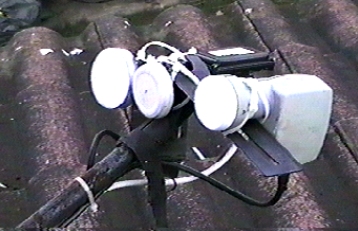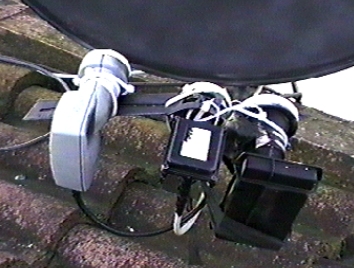|
If you have a Digibox and an 80cm or 90cm dish (perhaps off an older analog system you can mount multiple LNBs on it to either feed several receivers at the same time or one receiver via a change over switch arrangement. This works because as you move the LNB east the reflection source is further west, so if the main LNB on the arm is aligned for 19E then to the right (looking from LNB to dish) or East gives the further west of 13deg. Due to the width of the LNB and the focal length of typical 80 or 90cm dishes, 13 and 19 degrees are side by side (approximately). A 120cm dish will let you "see" satellites only 3 degrees apart. The closest spacing at 90cm is about 5 degrees. Because of the distance north we are at from the equatorial plane the satellites orbit on, the LNB must be lowered as you move it East and raised as you move it toward zero degrees (assuming the dish is lined up on 19E). As you move away from the true focus to "see" a satellite further east or west of the aligned position the signal is reduced. However it is not much reduced for 6degrees. An 80cm 19E dish with an offset LNB for 28.2 Degrees East (mount an LNB further to Left or West), has quite a reduced signal compared with the main LNB, but because the dish is so much bigger than the Sky Mini dish, the Sky Digital signal is improved. |
28.2 E ---------19.2E -- 13E Sky Digi---SkyAna--HotBird |

